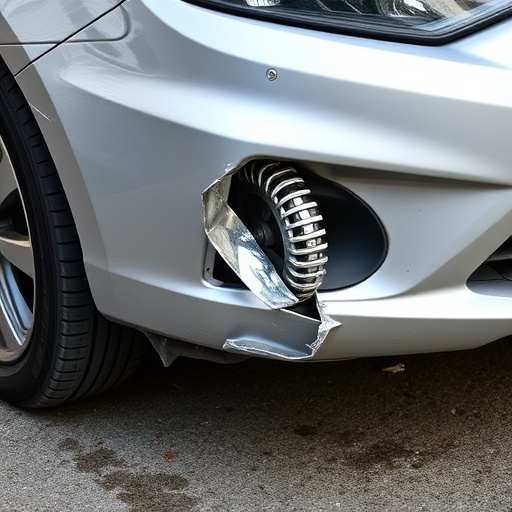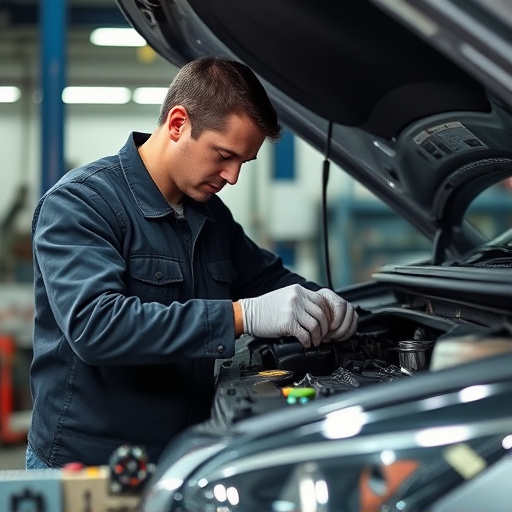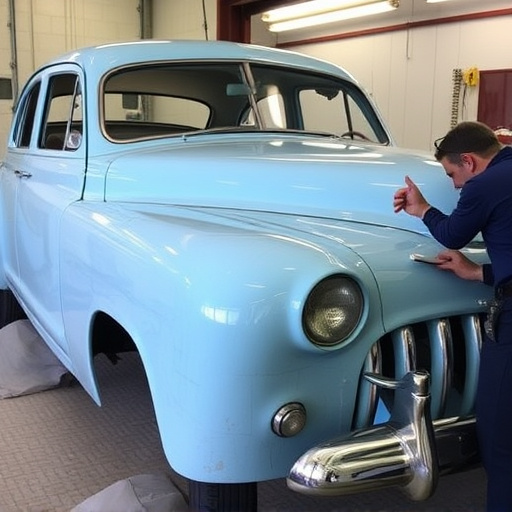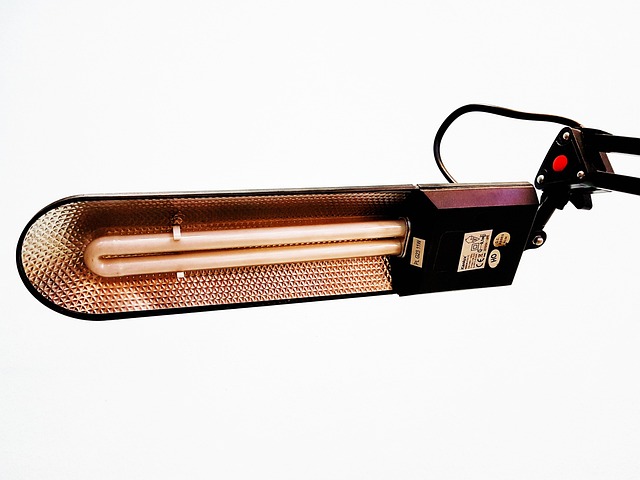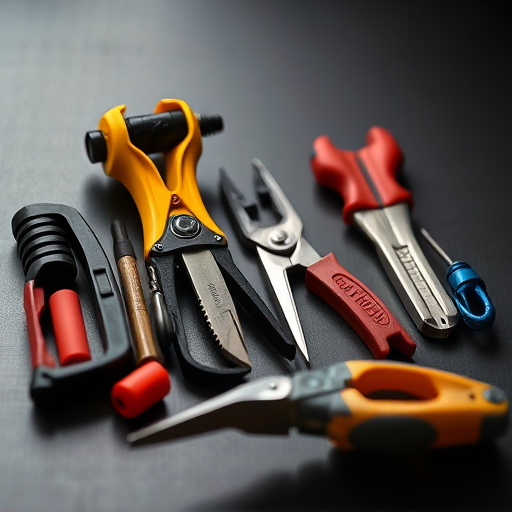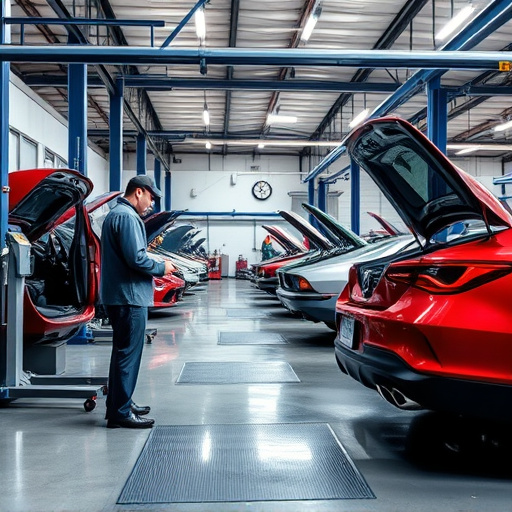Traditional vehicle repair methods, especially in auto body and collision centers, have severe environmental impacts due to toxic chemical use, energy-intensive techniques, and waste generation. These practices contribute to air and water pollution, ecosystem harm, and climate change. Adopting environmentally safe repair techniques using eco-friendly materials, water-based paints, biodegradable solvents, recycled materials, and energy efficiency is crucial for sustainability in the automotive sector, reducing ecological harm, carbon footprints, and protecting planet resources for future generations.
The current repair and maintenance landscape is marred by traditional methods that significantly harm our planet. From pollution and waste generation to resource depletion, these conventional techniques contribute to environmental degradation. This article explores how adopting environmentally safe repair practices can protect our planet. We’ll delve into the negative impacts of traditional methods, uncover the benefits of sustainable alternatives, and provide actionable strategies and tools for businesses and communities aiming to reduce their ecological footprint through environmentally safe repair.
- The Impact of Traditional Repair Methods on the Environment
- – Discuss the environmental consequences of conventional repair techniques
- – Highlight pollution, waste generation, and resource depletion caused by these methods
The Impact of Traditional Repair Methods on the Environment
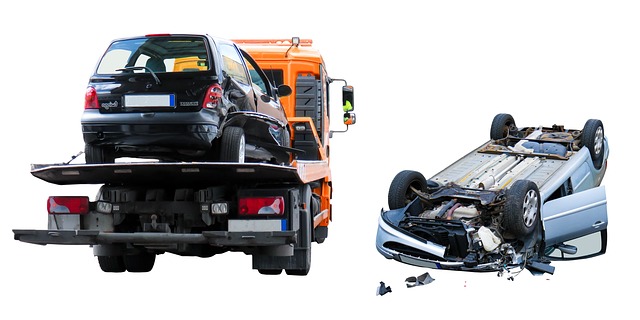
The traditional methods of repairing vehicles, particularly in the case of auto body repair and collision repair centers, have significant environmental implications. The processes involved often rely on toxic chemicals and energy-intensive techniques that contribute to air and water pollution. For instance, conventional car scratch repair techniques may utilize harmful solvents for paint removal, leading to volatile organic compound (VOC) emissions. These compounds not only exacerbate air quality issues but also pose risks to human health.
Furthermore, the waste generated from traditional auto body repair practices is substantial. The excessive use of single-use materials and inefficient recycling processes result in large volumes of scrap metal, plastics, and other byproducts ending up in landfills. This not only occupies valuable space but also creates a cycle of resource depletion and further environmental degradation. Adopting environmentally safe repair practices, such as using eco-friendly materials and implementing proper waste management strategies, is crucial to mitigate these negative impacts and move towards a more sustainable future for the automotive industry.
– Discuss the environmental consequences of conventional repair techniques

The conventional methods used in repair, especially within the automotive industry, have significant environmental implications. When focusing on aesthetics and quick fixes, traditional collision repair services often employ practices that contribute to pollution and waste generation. The use of toxic chemicals, volatile organic compounds (VOCs), and hazardous materials during painting and finishing processes poses risks to air quality and human health. Additionally, the energy-intensive nature of these repairs, coupled with the disposal of old or damaged vehicle bodywork, further exacerbates ecological concerns.
These conventional techniques not only harm the planet but also fail to address the underlying circular economy principles. Environmental safety is compromised when considering the lifecycle impact of such practices. By embracing environmentally safe repair methods, we can mitigate these issues. This shift promotes sustainable alternatives in car bodywork restoration, ensuring a cleaner and healthier environment for future generations.
– Highlight pollution, waste generation, and resource depletion caused by these methods

The traditional methods of auto collision repair and car paint repair come with a heavy environmental cost. The process often involves toxic chemicals, leading to air and water pollution. These chemicals, used in everything from solvents to paints, can contaminate local ecosystems and contribute to global climate change when not disposed of properly. Moreover, the energy-intensive nature of these repairs exacerbates resource depletion, as fossil fuels are burnt during manufacturing and transportation processes. Waste generation is another significant issue; old car parts and excess materials often end up in landfills, causing further environmental harm.
Adopting environmentally safe repair practices can mitigate these issues. These methods prioritize eco-friendly alternatives, such as using water-based paints, biodegradable solvents, and recycled materials. They also promote energy efficiency through innovative techniques and equipment, reducing the carbon footprint of automotive body shops. By shifting towards sustainable practices, we can protect our planet’s resources for future generations while ensuring a cleaner, healthier environment.
In light of the above discussions, it’s clear that adopting environmentally safe repair practices is not just a moral obligation but an urgent necessity. By opting for eco-friendly techniques, we can significantly reduce pollution, minimize waste generation, and conserve natural resources. Let’s embrace these sustainable methods to protect our planet and ensure a healthier future for all.
